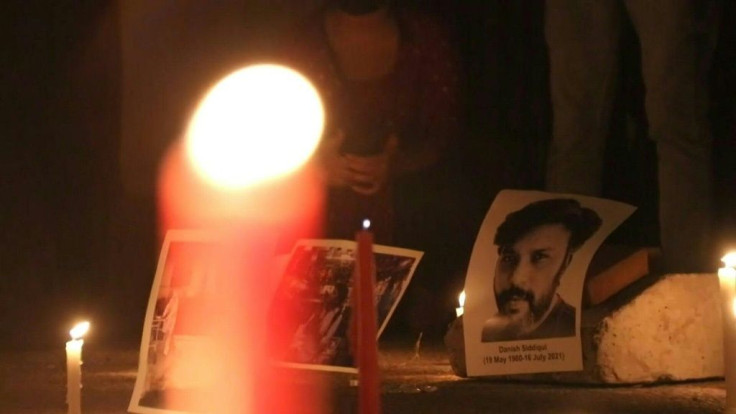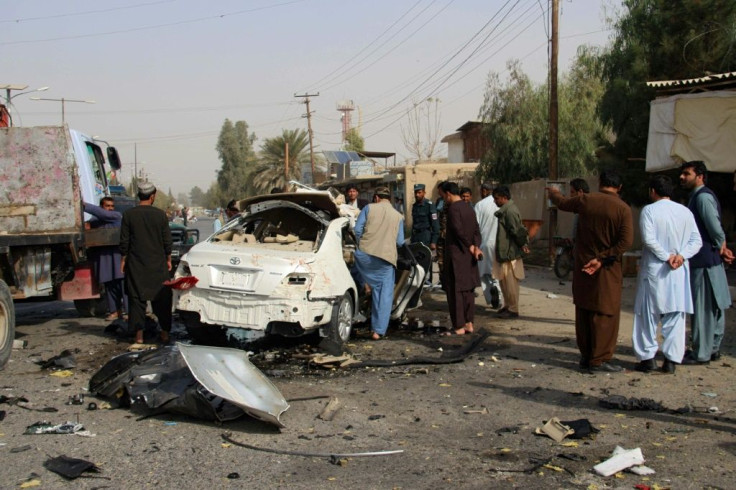Taliban Hunted Down And Executed Pulitzer-Winning Photojournalist, Says Report

KEY POINTS
- The report revealed that the Reuters India photojournalist’s body was “riddled” with bullets following a beating to the head
- Reuters said it is working with the authorities to find out more details about the death of its India chief photographer
- Siddiqui won the Pulitzer Prize in 2018 for his coverage of the Rohingya refugee crisis
A new report revealed more details about the death of Reuters India photojournalist Danish Siddiqui and how he was first hunted down by the Taliban, then brutally executed.
In the report by the Washington Examiner’s Michael Rubin, it was revealed that Siddiqui was hit by a shrapnel when a firefight ensued between the Taliban and the Afghan National Army team that the photojournalist was traveling with to cover fighting at the Spin Boldak region on July 16. Local authorities said Siddiqui was still alive when he was sent to a mosque for treatment.
The Taliban then raided the mosque after discovering that Siddiqui was there. The photojournalist was captured and executed, along with the Afghan army commander and remnants of the team who attempted to get him out of the mosque.
“Don’t whitewash details of photojournalist Danish Siddiqui’s murder” (my latest in @dcexaminer ) https://t.co/BplUZDJaE0 @AEIfdp #Afghanistan #Taliban #DanishSiddiqui @US4AfghanPeace #India
— Michael Rubin (@mrubin1971) July 29, 2021
In a video and photos reviewed by Rubin as provided by the Indian government, Siddiqui was shown to have been beaten in the head and shot multiple times in the body. A photo said to be of Siddiqui after the execution showed the photojournalist’s face was recognizable, however, Rubin wrote that the militant group “riddled his body with bullets.”
Regarding the Taliban’s motives for their hunting down and murder of Siddiqui, Rubin wrote that the photojournalist's brutal death “shows that they do not respect the rules of war or conventions that govern the behavior of the global community.” Rubin added that details about Siddiqui’s death now prove he did not merely die during a crossfire.
In its report following confirmation of Siddiqui’s death, Reuters reported that Siddiqui was "killed covering a clash between Afghan forces and Taliban fighters." Reuters president Michael Friedenberg had said in a joint statement with Editor-in-Chief Alessandra Galloni that the news agency was “urgently seeking more information” and cooperating with Afghan authorities regarding the matter.
Shortly after Siddiqui’s death made the news, Taliban spokesman Zabihullah Mujahid said the militant group was unaware that a journalist was on-site covering the fighting. Mujahid added that there were no clear details on how Siddiqui died.
U.S. State Department principal deputy spokesperson, Jalina Porter, had said the government was “deeply saddened” to hear of Siddiqui’s death “while covering fighting in Afghanistan.” Porter called for “an end to the violence,” noting that many journalists have lost their lives in Afghanistan.
Contributing editor at CNN-News 18, Aditya Raj Kaul took to Twitter to call out the “deafening” silence of “the western media” regarding the true details of Siddiqui’s passing.
Have accessed details of the brutality with which Indian Reuters Chief Photojournalist Danish Siddiqui was killed by the Taliban in Afghanistan and how his body was mutilated. It’s beyond horrific. Gathering more details. Silence of the western media on the murder is deafening.
— Aditya Raj Kaul (@AdityaRajKaul) July 29, 2021
Siddiqui, 41, had been with Reuters for more than 10 years. In 2018, he was awarded the Pulitzer Prize after covering Myanmar’s Rohingya refugee crisis. Siddiqui said previously that he enjoys coverage of various news stories but he enjoys “capturing the human face of a breaking story” the most.
Some of Siddiqui's best photos can be seen below.
Pictures of the Day: http://t.co/EmoC3w8DDy (Photo: Danish Siddiqui/Reuters. India) pic.twitter.com/EwsdAsGiuW
— NYT Photo (@nytimesphoto) October 29, 2014
Danish Siddiqui, Reuters' chief photographer, won the Pulitzer prize in 2018 for this photo of a Rohingya woman who had crossed the Bay of Bengal to flee genocide.
— Ed Clowes (@EdClowes) July 16, 2021
Danish was killed by a Taliban ambush in Afghanistan today whilst embedded with troops.https://t.co/LMGPHxKijy pic.twitter.com/YNpyJvE5oq

© Copyright IBTimes 2024. All rights reserved.






















